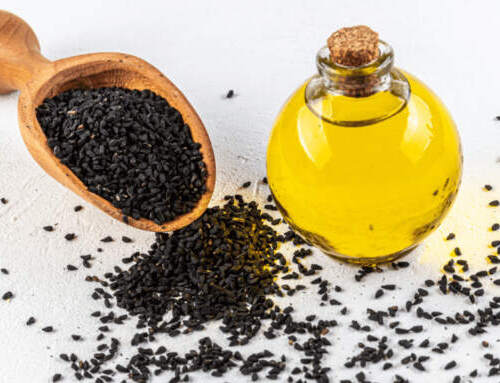For countless coffee drinkers around the world, the daily ritual of sipping a freshly brewed cup of coffee is a cherished moment. But, have you ever paused to think about the journey of those beans before they reach your cup? Or, more specifically, how the type of coffee and its roast can impact not just its flavor, but also how it sits in your stomach?
Many are unaware that the roast level of their favorite beans can be the hidden culprit behind that occasional acid reflux after their morning caffeine fix. Whether you’re a fan of the bold flavors of dark roast coffee beans or the bright notes of lighter roasts, understanding the nuances of the roasting process can be both enlightening and beneficial for your digestive comfort.
In this article, we’ll discuss coffee roasts, exploring the differences between light roast coffee beans and dark roast beans, and how each can affect your stomach. So, whether you’re a casual sipper or a die-hard coffee lover, read on to discover the secrets behind your beloved brew.

Dark Roasts vs. Light Roasts: The Impact on Stomach Acidity and How to Choose
Recent research suggests that dark roast coffee beans might be the go-to choice for coffee drinkers with sensitive stomachs. The study revealed that dark roasts are gentler on the stomach than their lighter roast counterparts, thanks to a specific compound that inhibits excessive acid production.
In this intriguing study, scientists exposed human stomach cells, which regulate acid secretion, to various types of coffee: standard, dark-roast, mild, decaffeinated, and low-acid. The findings were illuminating. While certain compounds in the different coffee roasts, including caffeine, catechols, and N-alkanoly-5-hydroxytryptamides, prompted stomach cells to produce more acid, another compound, N-methylpyridinium (NMP), did the exact opposite. Fascinatingly, NMP is produced during the roasting process, and its concentration increases the longer the coffee beans are roasted.
It’s noteworthy that dark-roasted coffee beans can boast up to double the NMP levels found in light-roasted coffee beans, although this can fluctuate based on the bean variety. The study also highlighted that while low-acid coffees, marketed for their gentleness on the stomach, do indeed reduce acid-producing compounds, they might not be the best choice for everyone. The reason? These coffee beans often undergo treatments with steam or chemical solvents like ethyl acetate and dichloromethane before roasting.
For those keen on savoring a cup without the worry of chemical solvents, the recommendation leans towards trying dark-roasted coffees. But with so many options available, how do you pick the right one? Stay tuned for some handy tips on deciphering coffee labels.
Navigating the World of Coffee Roasts: From Geographic Names to Caffeine Content
While some coffee brands straightforwardly label their offerings as “medium roast” or “dark roast,” others delve into the rich tapestry of coffee roasting traditions, using names that often resonate with geographic origins or historical practices.
For instance, medium-dark roasts encompass a range of intriguing titles such as Viennese, Full City, and Light French, extending to Continental, After-Dinner, and European. Progressing to a deeper roast, we encounter the likes of French (like the organic, Fair Trade selection from Equal Exchange), Espresso, Italian, and the robust Turkish roasts. The intensity peaks with Neopolitan or Spanish roasts, which, due to their very high temperatures and longer roast time, can sometimes exude a bold flavor with hints of charred or burned notes.
One good news for those leaning towards darker roasts is their typically less caffeine content, a factor known to cause stomach discomfort for some. If you’re still grappling with caffeine sensitivity, a dark-roasted decaf might be your best companion for a smooth flavor without the jitters.
Pay attention to color
Coffee beans start out green and then turn brown as they’re roasted, gradually growing darker until they’re nearly black for the darkest roasts. If you’re shopping somewhere that allows you to see the beans before you buy them, you can usually tell by looking at the color whether it’s a dark or a medium roast coffee.
From Green Beginnings to Rich Browns: Deciphering Coffee Roasts by Color
Green beans, the raw and unroasted form of coffee, undergo a transformative journey during the coffee roasting process. As they’re exposed to higher temperatures, these beans shift from their natural green hue, through varying shades of brown, capturing the essence of brown color indicative of the roast’s depth. For the most intense roasts, the beans take on a near-black appearance, showcasing the characteristics of dark coffee. When browsing a store that displays its beans, a quick glance at their color can offer insights into their roast style. Whether you’re seeking the bright flavors of a light city roast or the complex flavor profiles of a dark roast, the bean’s color is a telling sign of what’s in store for your cup of coffee.
Beyond the Roast: Delving into Other Influences on Digestive Comfort
While the roast of your coffee beans plays a pivotal role in how your stomach reacts, there are other elements in the coffee-making process that can influence your digestive comfort.
- Brewing Method: Different brewing techniques can alter the coffee’s composition. For instance, the cold brew method, known for its mellow body and reduced acidity, can be gentler on the stomach compared to other methods. On the other hand, the French press, which allows for a full body extraction, might retain more of the bean’s natural oils, leading to a richer flavor and an oily surface on the brewed coffee.
- Brew Time: The duration for which coffee grounds are exposed to water can significantly affect both the acid levels and caffeine content. A longer period of time might extract more acids and caffeine, potentially causing discomfort for some coffee drinkers.
- Natural Oils: Darker roasts, especially those approaching Italian roast or French roast levels, tend to bring out more of the bean’s natural oils. These oils, visible on the oily surface of dark coffee beans, can contribute to the coffee’s bold flavor but might also play a role in how it interacts with your stomach.
Understanding these factors, along with your personal preferences and sensitivities, can guide you in crafting the perfect cup of coffee that’s both delicious and easy on your stomach.

Caffeine Dynamics: Light Roast vs. Dark Roast
The world of coffee is as intricate as it is invigorating, with the caffeine content being a focal point of many discussions. This vital chemical compound‘s concentration is closely tied to the type of roast, influencing the pep you get from your morning cup of joe.
During the roasting process, coffee beans undergo various stages, with the “first crack” being a significant milestone. This is when beans expand and release moisture, resulting in a cracking sound. Typically, light roast beans are roasted just up to or slightly beyond this first crack, preserving more caffeine. Contrarily, as beans are roasted to darker levels at higher temperatures and for longer periods of time, some of the caffeine diminishes.
So, if you’re after a vibrant bright flavor with a higher caffeine punch, a roast that’s around the first crack stage, like a light city, might be your go-to. Meanwhile, medium roast coffee, known for its balanced flavor, generally has a moderate caffeine content. [Looking for the boost without the coffee, read this]
When choosing between different roasts, it’s beneficial to weigh both the flavor nuances and the caffeine levels to find your perfect brew.
Prioritizing Quality and Sustainability
As you embark on your quest for a stomach-friendly brew, don’t forget the three pillars of conscious coffee consumption. Opt for certified-organic coffee that’s cultivated without harmful pesticides, ensuring a cleaner cup. Support ethical practices by choosing Fair Trade Certified coffee, which guarantees fair compensation for farmers in developing nations. Lastly, embrace the environment with shade-grown or Bird Friendly coffees, grown beneath shade canopies that double as sanctuaries for native birds. Not only do these choices champion our planet, but they also offer a bonus: a richer profile of beneficial antioxidants in your coffee.
Conclusion
In the world of coffee, understanding the nuances of roasts and brewing methods can make all the difference in how you enjoy your daily cup and how it interacts with your stomach. Just as you take the time to select the perfect brew for your well-being, it’s equally important to prioritize other aspects of self-care. After all, a balanced life isn’t just about what you consume, but also how you treat your body. If the discussions of roasts and brews have you feeling a tad tense or if you’re simply looking for a way to escape the daily grind, consider scheduling a rejuvenating massage at Body Ache Escape. It’s the perfect complement to your mindful coffee choices, ensuring both your inner and outer self are in harmony.






